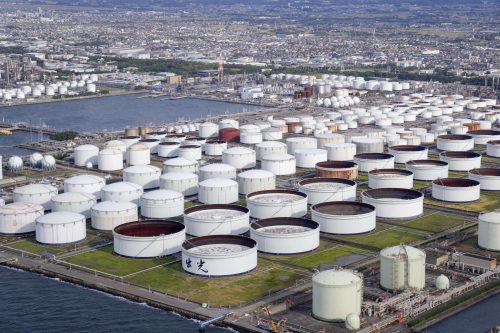Crude oil prices fell by more than 2% at the end of trading today, Tuesday, April 25 (2023), after two sessions of gains.
This comes with uncertainty about the global economic outlook and a rising US dollar, which outweighed investor optimism about demand in China and expectations of lower US oil inventories.
Crude oil prices started the morning trading on the rise, supported by investor optimism that traveling on holiday in China will boost demand for fuel, with expectations showing that US oil inventories recorded a decline.
Crude oil prices today
At the end of the session, benchmark Brent crude futures – for June 2023 delivery – fell by 2.4%, to $80.77 a barrel.
West Texas Intermediate crude futures – for June 2023 delivery – fell by 2.2%, to $ 77.07 a barrel, according to what was seen by the specialized energy platform.
Crude oil prices ended their trading, yesterday, Monday, April 24, with an increase of more than 1%, with the decline of the US dollar and optimism about demand in China.
Oil price analysis
The US dollar rose as worries about corporate earnings and the outlook for the global economy deepened, which made oil more expensive for other currency holders and tended to reflect investors’ risk appetite.
“The recovery of the dollar is weighing on the sentiment,” said Stephen Brennock, an analyst from oil brokerage PVM. “I think the upcoming macro releases related to US house prices and consumer confidence are keeping buyers on the sidelines as well.”
Saxo Bank’s strategic commodities analyst Ole Hansen said: “The general level of risk appetite has deteriorated increasingly again today with losses seen in most commodity markets.”

demand for oil
Crude oil prices received support on optimism that holiday travel in China will increase fuel demand in the world’s second largest economy.
Bookings in China for outbound trips over the upcoming Labor Day holiday indicate a continued recovery in travel to Asian countries.
However, the numbers are still far from pre-corona levels, with long-haul airfares soaring and not enough flights available.
“Investors have expressed optimism that Chinese holiday travel will boost fuel demand in the world’s largest oil importer,” said Leon Lee, an analyst at CMC Markets.
He added, “Expectations of a slowdown in US GDP growth in the first quarter led to a decline in the US dollar index yesterday, supporting gains in crude oil prices.”
A weaker US dollar could help global demand for oil by making it cheap for foreign currency holders in other countries.
interest rates
However, investors remain concerned about the possibility that central banks in the United States, Britain and the European Union will raise interest rates further to curb inflation, which could slow economic growth and dampen energy demand.
The US Federal Reserve, Bank of England and European Central Bank are expected to raise interest rates when they meet in the first week of May.
“The Fed remains bullish, despite expectations of a recession in the West in the second half of the year, the possibility of a smaller-than-expected recovery in oil demand in China, and Russian oil exports still Strong despite the official directive to cut production by 500,000 barrels per day.
He added, “However, we believe that crude oil prices will rebound back to levels of $85 a barrel and above again in the coming months as the OPEC+ cut begins and more evidence of oil demand growth from China,” Reuters reported.
Russian oil exports
Russian Deputy Prime Minister Alexander Novak said in February that his country would cut production by 500,000 barrels per day in March, then pledged in early April to extend the cuts until the end of the year.
But trade and shipping sources say oil shipments from Russia’s western ports in April will rise to their highest levels since 2019, above 2.4 million bpd, despite Moscow’s pledge to cut output.
Meanwhile, investors are awaiting industry data on US oil inventories on Tuesday, as analysts polled by Reuters expected the data to show a decline in US crude stocks by about 1.7 million barrels in the week ending April 21.
Official government data on US oil inventories from the Energy Information Administration is due on Wednesday.
related topics..
Also read..

Leave a Reply